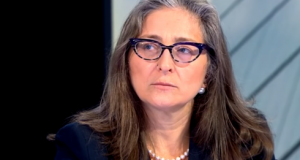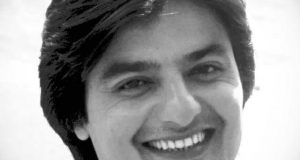 Definition – ‘the state of being male or female (typically used with reference to social and cultural differences rather than biological ones).’ (Oxford Dictionary)
Definition – ‘the state of being male or female (typically used with reference to social and cultural differences rather than biological ones).’ (Oxford Dictionary)
As is understood from the definition above, gender is not a biological absolute. The human body has huge variety and specifically gender identity, a very wide range.
When a child is conceived there is an almost incredible merging of genes, awesome in their complexity and extraordinary in in their accomplishments.
Scientists are piecing together the amazing knowledge of how this all works and although we may never have answers to all our questions, one thing is certain, to be born at all is extremely lucky; the potential people that might have been born, outnumber the sands of Arabia (Dawkins – Unweaving the Rainbow).
The very complexity of human beings means that variation is normal and to be expected. Although we think in terms of male and female, two genders do not comprise human diversity no matter how much we like to ‘label’ people.
The mind is as yet an unknown quantity and science has only just begun to unravel its mysteries; nothing it seems, in any human behaviour, can strictly be called ‘unnatural’. We have social norms wherein the vast majority of human beings conform to approximately the same behaviours and structure – heterosexuality, intelligence, body shape, but the scope of humanity is much larger. On what may be called the ‘edges’ there are many anomalies which include – genius, hebetude, talent, creativity, physicality etc. and whilst these many humans at the edges don’t necessarily conform to ‘social norms’ they are, most definitely, human ‘nature’, more importantly, they are not confined to socially engineered gender identities; these qualities are found in male and female alike. As with physical and mental capability and multiformity, sexual proclivity and gender are not entirely correlated either, thus, in sexual orientation, we have homosexual, lesbian, bisexual, transsexual, asexual as well as heterosexual – all of which can be deemed ‘natural’.
The assigning of gender and associated attributes and characteristics leaves many outside social norms, wondering why they don’t seem to fit. Society imposes sanctions against them, criminalises or venerates them accordingly. In a rigidly gendered society such as patriarchy for example, a whole gender, ‘female’, has been subjugated to the other, ‘male’, and education, nutrition, work and choice have been denied her. When opportunities are withheld because of gender inequality or the alienation of those outside a codified norm, a world that might have been, has been limited or lost.
The recent scientific and biological revelations regarding gender, are today rewriting the model of the male/female dichotomy conceived at the time when human societies formed and gender identities assigned. Science is discovering and revealing just how complex and diverse human nature is and societies are realigning morality and human rights to what is ‘natural’ in the knowledge that gender identity is multi-faceted and of infinite scope. It is being recognised that a human may be born with a ‘man’s’ body and the mind of a ‘woman’ and vice versa, besides innumerable intermediate or coterminous modification and that gender is incapable of precise definition – it is ‘with reference to social and cultural differences rather than biological ones’. Each human being is unique.
Writer: Kay Saxon
The writer is a UK based columnist and commentator with THE PASHTUN TIMES. She is graduated from the University of Central Lancashire, North of England. She can be reached at
kaysaxon@hotmail.co.uk
THE PASHTUN TIMES
 Pashtun Times Latest News
Pashtun Times Latest News



